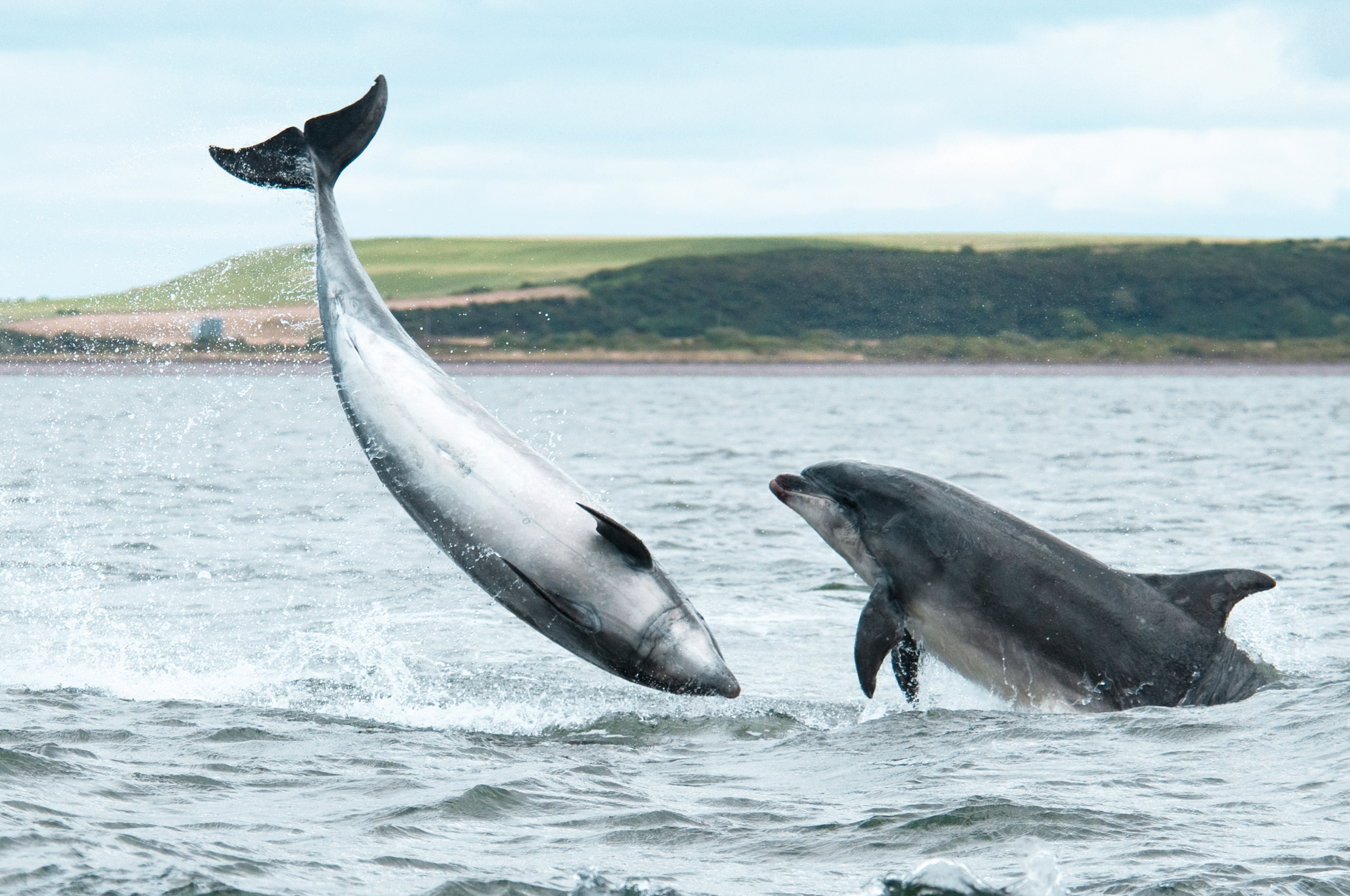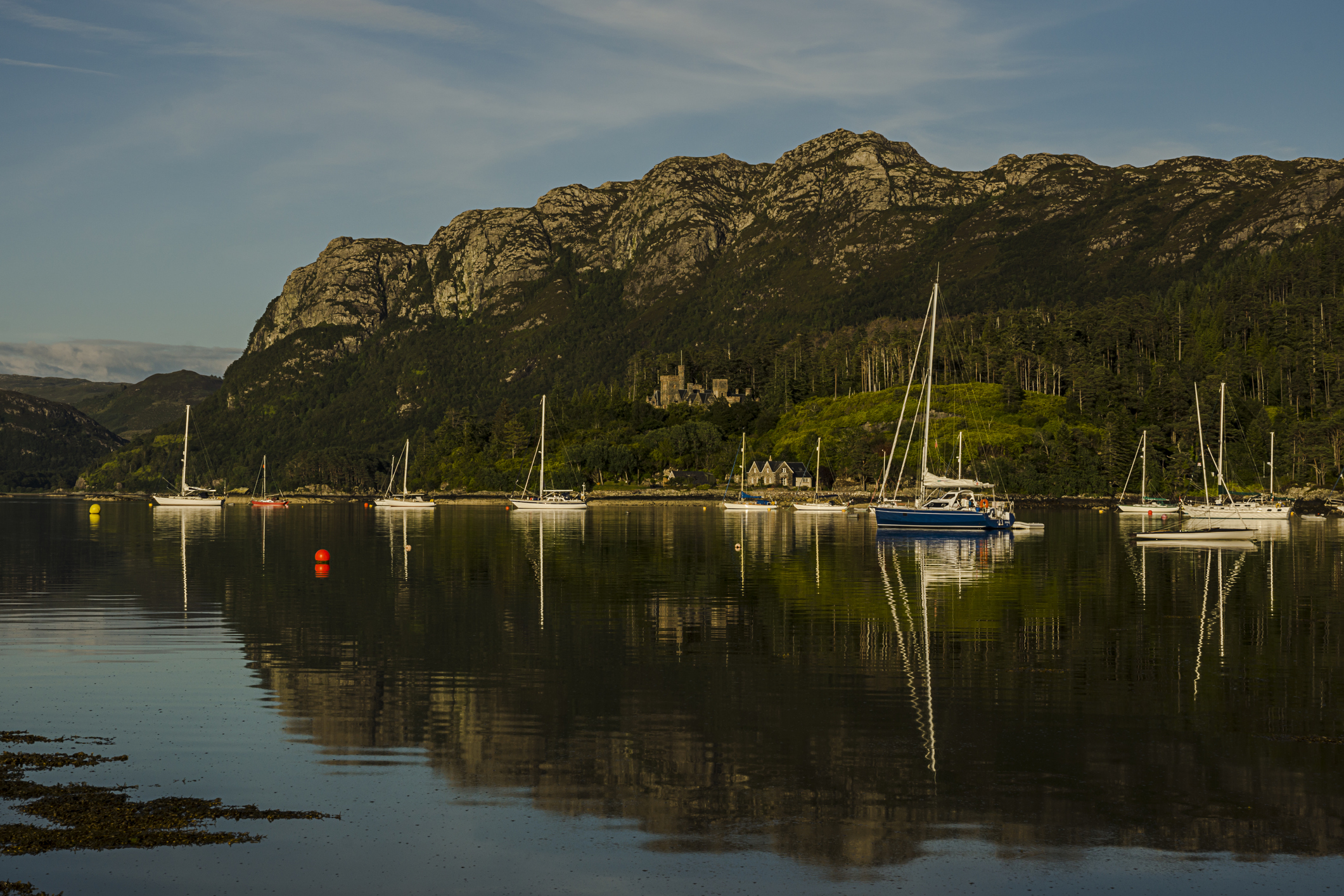Curious Questions: Why do all of Britain's dolphins and whales belong to the King?
More species of whale, dolphin and porpoise can be spotted in the UK than anywhere else in northern Europe and all of them, technically, belong to the Monarch. Ben Lerwill takes a look at one of our more obscure laws and why the animals have such an important role to play in the fight against climate change.


It was a quiet afternoon in the summer of 2004 when Swansea Bay fisherman Robert Davies hauled in the catch of his life. ‘To be honest, I didn’t know what it was,’ he confessed to reporters at the time — and his puzzlement was understandable. He had inadvertently netted a 9ft-long sturgeon, a giant fish seldom spotted in British waters. It weighed just shy of 19 stone (120kg) and looked like something from Jurassic Park. But Mr Davies’s first legal duty? He was obliged to offer the sturgeon to the Queen.
Her Majesty duly declined — by way of a fax from the Royal Household that informed Mr Davies he could ‘dispose of it as he saw fit’ — and the rare fish ultimately found itself in the care of the Natural History Museum, where it remains, preserved in alcohol, to this day. The whole piscatorial palaver, however, shone light onto one of Britain’s more eccentric ancient laws. Due to the ‘superior excellence’ of whales, sturgeons, dolphins and porpoises, any of these species caught or washed up on our shores technically belongs to the Monarch.
The rule dates back to the 14th-century reign of Edward II, when whales and sturgeons were declared ‘Royal Fish’, seemingly because their size and grace deemed them worthy of a regal prerogative. Dolphins and porpoises, majestic animals both, were later added to the designation. Today, the Crown still has a legal claim on this quartet of sea creatures whenever they’re caught or stranded off England, Wales and Northern Ireland, although, in Scotland, the law applies only to beached whales too heavy to be drawn by a ‘wain pulled by six large oxen’. Good luck putting that one to the test.
“Whales and dolphins are awesome and they also play an enormous role in providing a solution to the climate emergency”
Despite still being legally valid — regardless of whether the cetaceans themselves are resident or migratory — these regulations are now essentially a relic of another era, akin to those dusty old bylaws about herding sheep across London Bridge or being drunk in charge of a cow. When a man famed for eating roadkill decided to cook a washed-up Cornish dolphin for his Christmas dinner in 2015, endangering his health in the process, he appears to have received sharp words from conservationists, rather than a royal summons.
More pertinent is the fact that the presence of awe-inspiring, super-sized cetaceans in our waters is very much an ongoing phenomenon. About 29 species of whale, dolphin and porpoise can still be spotted around the British coastline at different times of year — more than anywhere else in northern Europe — from sleek-bodied orcas and stately minke whales to playful pods of bottlenose dolphins. All are now protected by wildlife legislation, including the Wildlife and Countryside Act of 1981. For Danny Groves, of the UK-founded charity Whale and Dolphin Conservation, this diversity is very much something to celebrate and protect — and he clarifies a few important points.
‘Technically, the Royal Fish law applies to whales or dolphins washed up on shore,’ he explains. ‘As transient and sentient mammals, they don’t belong to us humans when they’re in the ocean. And quirks of British history aside, in reality whale and dolphin strandings are investigated and documented today by the UK Cetacean Strandings Investigation Programme, the Scottish Marine Animal Strandings Scheme and the appropriate local authority, which will deal with disposal of the carcass.’ This also makes it illegal to be in possession of, transport, sell or exchange any part of a whale, dolphin or porpoise — ‘please don’t be tempted to take a tooth,’ says Mr Groves — and, unearthly smell aside, their decomposing bodies also pose risks to the health of humans and dogs.
In their watery domain, four of these incredible species can be classified as resident or semi-resident to Britain (bottlenose and Risso’s dolphins, harbour porpoises and orca), whereas for many other cetaceans our waters serve as valuable summer feeding grounds as they migrate to and from their breeding territories. The seas around Scotland are particularly rich for sightings, but south-west England and the west coast of Wales have hotspots of their own. Although these animals routinely face manmade threats such as pollution, global warming and accidental capture in fishing nets, there are some reasons for optimism.
Exquisite houses, the beauty of Nature, and how to get the most from your life, straight to your inbox.
‘Historically, direct removal of individuals by hunting had severe effects on populations in our waters as well as globally. Thankfully, the UK no longer allows whale hunting,’ continues Mr Groves, explaining that data remains insufficient to monitor exact numbers. ‘One species, humpback whales, are reportedly being sighted more frequently. This may be a sign of populations recovering from whaling, but could also reflect increased awareness and sighting efforts on the coast.’
He outlines, too, how our temperate waters can hold tangible benefits for hungry species. ‘The UK seas do offer a number of menu choices for whales and dolphins, and our geography provides different habitats. The shelf-edge suits deep-diving species, such as sperm whales and pilot whales, for example, whereas shallower sand and mud banks are key areas for harbour porpoises.’
Putting the Royal Fish law to one side, it has become ever more vital to safeguard the future of what are some of the planet’s most spectacular wild animals. Responsibly run whale-watching trips can benefit everyone involved — from guests and operators to local communities and the sea creatures themselves — but human disturbance is otherwise frowned upon. The stakes, after all, are high.
‘Whales and dolphins are awesome and they also play an enormous role in providing a solution to the climate emergency,’ concludes Mr Groves. ‘The ocean absorbs more carbon and releases more oxygen than all of earth’s forests and the great whales help it flourish by stimulating the production of oxygen in our seas.’
Visit uk.whales.org
How do whales help combat climate change?
- ‘The way that whales feed, poo, migrate and dive between the surface and the ocean depths circulates essential nutrients throughout the ocean,’ notes Whale and Dolphin Conservation. The phenomenon is known as the ‘whale pump’ and it, in turn, supports healthy marine ecosystems and the growth of carbon-capturing phytoplankton
- Whales lock in such huge amounts of carbon that their mass slaughter during the peak of commercial whaling in the 19th and 20th centuries may have contributed to the acceleration of climate change. A single whale can sequester away an average of 33 tons of carbon dioxide over its lifespan; a live oak tree captures roughly 12 tons

The wildlife safaris you can take without even leaving Britain, from puffins and golden eagles to dolphins and deer
The word ‘safari’ may evoke lions and Land Cruisers, but you’ll never run out of wildlife-based thrills on these shores.

The Ship Inn Cricket Club: The tale of the world's only cricket club to play its matches on the beach
A game of beach cricket with captains and kings leaves Steve King with hazy memories, but the all-encompassing glow of

'Owning a boat is like standing in a cold shower, ripping up tenners — but it's everything I dreamed it would be'
Joe Gibbs ignored the warnings and bought himself a boat. One year one, are the joys greater than the regrets?

Curious Questions: Why do ships have figureheads?
Always adorned with eyes, often female and sometimes in a compromising pose, carved figureheads were cherished by their crews. But
Ben Lerwill is a multi-award-winning travel writer based in Oxford. He has written for publications and websites including national newspapers, Rough Guides, National Geographic Traveller, and many more. His children's books include Wildlives (Nosy Crow, 2019) and Climate Rebels and Wild Cities (both Puffin, 2020).
